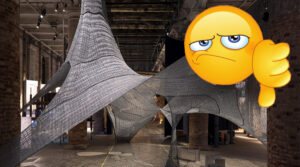 In today’s world, the line between artistic expression and commercial interest is blurring faster than ever, raising important questions about what art truly means in a consumer-driven culture.
In today’s world, the line between artistic expression and commercial interest is blurring faster than ever, raising important questions about what art truly means in a consumer-driven culture.
Authentic expression of art
Art has historically been regarded as one of the most genuine forms of human expression, serving as a medium for emotion, observation, and creativity. However, in the contemporary world, the distinction between art and commerce is becoming increasingly indistinct. The commercialization of art has transitioned from being a mere consequence of cultural appeal to a fundamental aspect of its production, consumption, and valuation.
The good in commercialization
On one side, this commercialization has provided numerous artists with the chance to sustain themselves financially through their creations. Social media, digital platforms, and international markets have unlocked opportunities that were previously dominated by galleries and institutions. Artists now have the ability to sell directly to their audience, partner with brands, or establish their own enterprises. Consequently, art has become more accessible, more visible, and arguably, more democratic.
The bad in commercialization
But on the other side, this expanding market influence often reduce the original value of art. The demand to create profitable work can overshadow genuine expression. Instead of fostering innovation, we witness a trend towards repetition, and copying other artwork that you know is definitely profitable . Originality is frequently sacrificed in favor of following trends. The focus shifts from authentic expression to engagement metrics, product placements, and revenue generation.
This transformation has also altered our understanding of artistic value. Previously, art was evaluated based on emotional resonance, technical proficiency, or social critique, and now it is increasingly assessed through likes, and popularity.
Now it’s not exactly that commercialization ruins art, numerous beautiful works throughout history were commissioned, by churches, monarchs, or patrons, with the entire point of the artwork to be sold. The distinction in the present day lies in the magnitude and rapidity of the marketplace, along with the prevalence of a consumer mentality that prioritizes immediate satisfaction over deep reflection.

